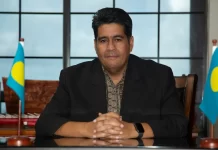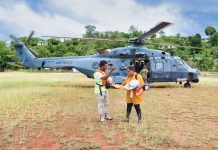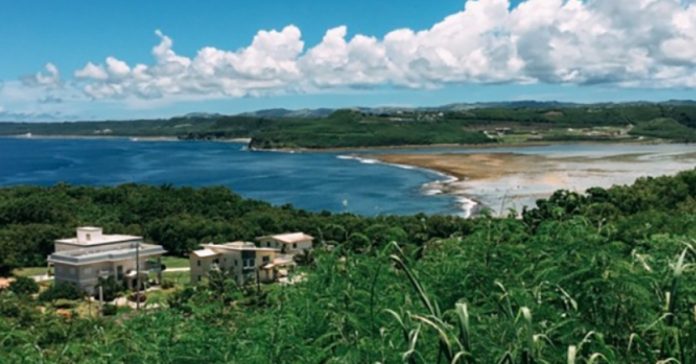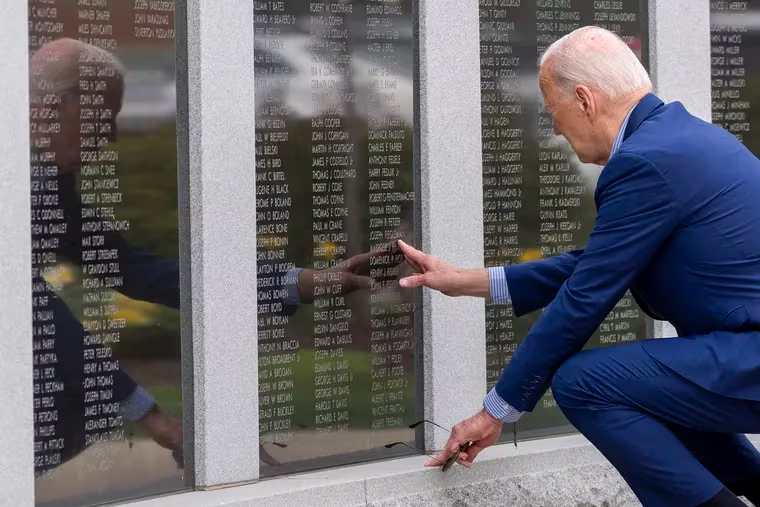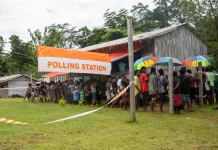The U.S Department of the Interior has announced US$12 million in key investments for Guam, American Samoa, the Northern Mariana Islands and the U.. Virgin Islands to assist the territories in “climate change planning, mitigation, adaptation and resilience.”
The grant was provided through the Inflation Reduction Act, a component of President Joe Biden’s Investing in America agenda.
Of the US$12 million, Guam received US$2.7 million earmarked as follows:
*US$1,789,000 to the Office of the Governor of Guam for the Southern Guam Flood Mitigation Project, with additional funding to support the National Environmental Policy Act review and compliance.
*US$975,000 to the Hågatña Restoration & Redevelopment Authority for the Hågatña River Channelization and Watershed Feasibility Study.
“These funds will build on the climate change mitigation measures initiated by our administration and, in the long-term, lead to the innovation of more resilient climate-ready infrastructure on our island,” said Governor Lou Leon Guerrero. “Our office continues working to pursue the federal grants that provide the financial support necessary to advance long-delayed local projects. We are keeping Guam’s sustainable green growth top of mind.”
“The completion of these studies will provide for the stronger protection of our coastal communities in the south and expand the economic potential of our island’s capital,” said Lieutenant Governor Josh Tenorio. “As we fasten our recovery, initiatives like these will help build our prosperity. We are grateful to the Office of Insular Affairs for their continued support.”
“The Investing in America agenda presents an important opportunity for the territories in their efforts to plan for, mitigate the effects of, and build resiliency against climate change,” said Carmen G. Cantor, assistant secretary for Insular and International Affairs.
Cantor announced the grant during her remarks at the Department of the Interior’s Territorial Climate and Infrastructure Workshop in Hawaii.
“These investments will support our work to foster stable and sustainable island communities, as we partner with territorial governments to build climate resilient communities,” she added.
The Territorial Climate and Infrastructure Workshop convened local, federal and territorial representatives to discuss how the President’s Investing in America agenda is providing once-in-a-generation climate and infrastructure resources to the U.S territories, including investments in ecosystem restoration and climate resilience.
“President Biden’s Investing in America Agenda is turbocharging our efforts to protect all communities from the impacts of the climate crisis, including island communities that face unique climate challenges,” said Brenda Mallory, chair of the White House Council on Environmental Quality .
“This funding will increase coastal resilience across the U.S. territories through new infrastructure that will mitigate flooding, prevent erosion, improve stormwater drainage, and build stronger and more sustainable communities,” she added.
Last week’s announcement follows the release of the department’s restoration and resilience framework, a plan to leverage historic investments in climate and conservation to achieve landscape-level outcomes across the nation – including through a commitment to building resilient Islands.
Officials said the DOI is implementing more than US$2 billion to restore the nation’s lands and waters and build climate resilience through the Investing in America agenda.
The framework lays out an initial set of keystone initiatives to guide historic investments from both laws, which are focused on addressing the climate and biodiversity crises, advancing co-stewardship and equity, furthering locally-led, collaborative strategies and focusing landscape-scale restoration work on areas where the Department has an opportunity have a transformational impact at scale.
The funding awards announced are as follows:
*US$2,800,000 to the American Samoa Office of Disaster Assistance and Petroleum Management for efforts to collect and update data on sea level rise to ensure that it is the most current and accurate for all seven islands of American Samoa. Data collected through this project will be included in the National Geodetic Survey’s Sea Level Viewer Tool, updating vertical data for Tutuila and the Manua Islands. Funds will also support community outreach, development of mitigation strategies, and the creation of a manual on best management practices for shoreline protection. Funds will also support the implementation of recommendations in the Faga’alu Watershed Plan, identified by the U.S Coral Reef Task Force as a priority watershed. These efforts will improve water quality, reduce risks of flooding, and increase resilience to a changing climate.
*US$2,786,004 to the Commonwealth of the Northern Mariana Islands Government for numerous priority projects including to restore and rehabilitate Jeffrey’s Beach to support public use, while also preventing erosion, damage and run-off; improve stormwater infrastructure at Tanapag Middle School and the Gregorio T. Camacho Elementary School; improve stormwater drainage and rehabilitate the shoreline at Tanapag Beach Park to prevent erosion; manage stormwater and mitigate land-based sources of pollution at the Lower Base Lift Station; update the CNMI Stormwater Management Manual; promote food security through subsistence farming and chicken raising practices through the “Ta Tanom: Let’s Plant” project on Rota; and promote food security for families on Saipan through the Home Gardens Food Security Initiative. Several of the projects are located within the CNMI’s prioritized Achugao Watershed area.
US$2,764,000 to the Government of Guam for several projects, including to study the Hågatña River for solutions to mitigate flooding and damage within the identified 100-year flood zone; study of climate events and impacts related to the 2018 Hågatña Master Plan and plan for increased watershed potential and drainage capacity to mitigate flooding; and stabilise the Umatac and Ñamo Rivers through pre-storm cleaning and maintenance to mitigate and stabilise soil erosion and control flooding in the southern villages of Santa Rita, Agat, and Umatac while also protecting coral reefs offshore.
*US$649,996 to the U.S Geological Survey to conduct a rigorous valuation of where potential coral reef restoration could decrease the hazards of erosion and flooding faced by coastal communities in Guam, Saipan and Tinian; and Tutuila, Tau and Ofu-Olosega in American Samoa. The USGS will issue a final report with the results. A similar coral reef valuation and report was produced for Puerto Rico and the U.S Virgin Islands.
*US$3,000,000 to the U.S Virgin Islands Department of Planning and Natural Resources for a Climate Adaptation Roadmap for the U.S Virgin Islands. The project will include data collection on temperature and water resources to better understand trends specific to the territory and its climate needs. Funds will also be used to restore historical documents that were damaged by repeated heavy storms, harden existing infrastructure that houses archival documents for the territory, and digitise historical and archival materials.
SOURCE: PACIFIC ISLAND TIMES/PACNEWS


